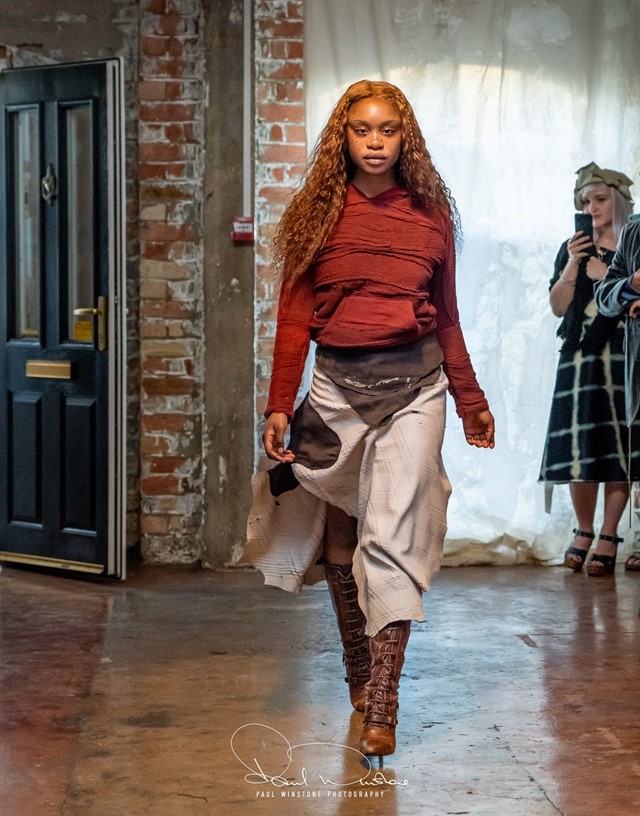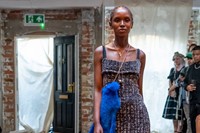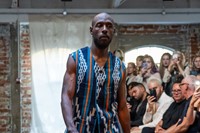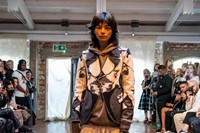The designer’s S/S23 presentation, shown during London Fashion Week, explored both British post-colonial and African pre-colonial culture
- Who is it? Olubiyi Thomas is a Lagos-born, Glasgow-raised and London-based designer who is reimagining the communal space between British post-colonialism and pre-colonial African culture – one sustainably-sourced textile at a time
- Why do I want it? Deconstructed, avant-garde pieces that are projected through a personal dimension, with reference to philosophy, history and religion
- Where can I get it? olubiyithomas.com
Who is it? Born in Lagos and raised in Glasgow, London-based designer Olubiyi Thomas projects a curated image of his diverse upbringing through the lens of fashion and art. Drawing on his Yoruba heritage and British culture, he’s been able to blend his interests in philosophy, religion, and history in his collections. For Spring/Summer 2023, Phoenix Rising, he uses multi-heretic and intercultural emblems, pre-colonial styles, and handcrafted West African textiles that juxtapose the appliqué of European linen. These textiles are woven together to mitigate the bond between masculine and feminine silhouettes that illustrate the theory of the life and death cycle.
Being a pastor’s son and growing up in a Pentecostal family, Thomas was instilled with Christian values from an early age. “My mum is the pastor of our church. So I think a lot of those ideas are heavily Christian-leaning,” he says. “I’ve sort of left it to the side, in terms of really intense indoctrination, like organised religion. That’s not really something that I’m into. But for me – the foundations, some of the pillars about kindness and meekness, the way to treat my fellow humans – for me, these things are so fundamental.” The lessons he was able to distill from his religion manifest in his work today, but are counterbalanced by African philosophy that he’s carefully combed through. “I think – in terms of Yoruba philosophy – there’s a slight crossover with those ingrained Christian beliefs where it’s basically just about treating people the way you want to be treated,” he explains. “Treating the universe in a good way and also taking care of the earth because obviously, the idea is that we’re all connected. So if we’re connected to the earth, to the ground, to the trees – if we’re connected to something, then you’re going to treat people the way you want to be treated.”
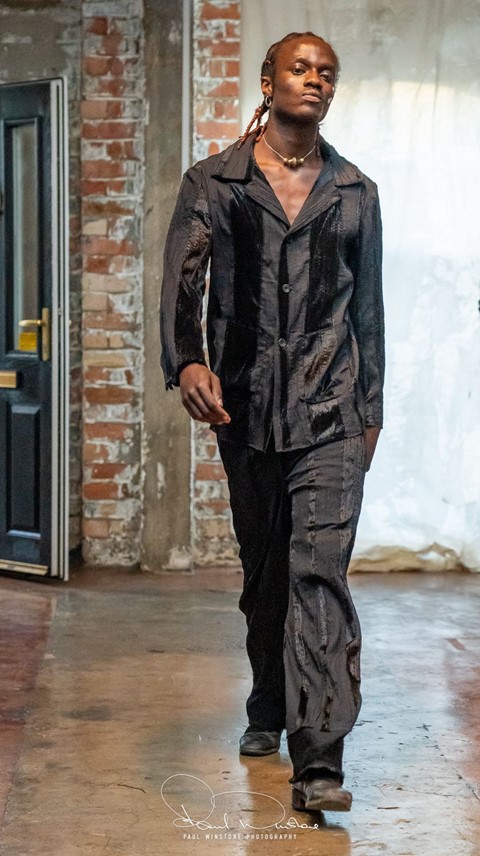
This approach to the connection between humans and the Earth, and life and death, shows up in his sustainability practices as well. His experimental use of recycled and found fabrics is a response to the current climate of today’s environment – but is not a solution. “I didn’t wake up with a sustainable flag in one hand being like, ‘I’m gonna change the world.’ That just sort of happened organically, and I’ve made a real effort to incorporate those ideas of my work and just to try and live by those codes of conduct,” he says.
The Central Saint Martins graduate, whose previous work spans a studio role at Alexander McQueen to a directorial position at De Rien, truly hasn’t looked back since the launch of his own label in 2016. “I believe in callings. I believe that there are certain things that you were born to do. I wouldn’t want to do anything else.”
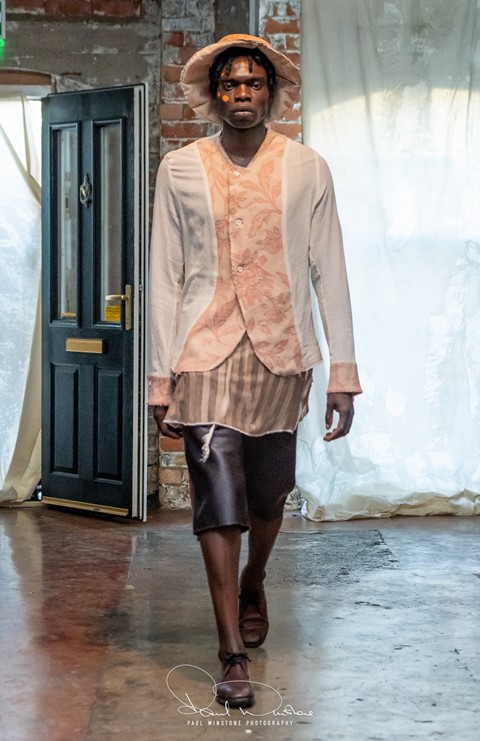
Why do I want it? Surprisingly, Thomas doesn’t formally reject any narratives of traditional fashion performance and presentation. He understands the functionality of a conventional runway but believes that clothes only come alive when you take them off the hanger and breathe life into them through movement.
Accompanied by historically-referenced tailored silhouettes that drape and layer along raw edges, Thomas integrated performance, music, dance, and spoken word into his latest show. “That’s why I try to build these different perspectives so we can soak in a bit more information, maybe through words, through the music, through dance.” The multifaceted performers – who wore oversized garments soaked in earth tones – not only served as a crucial part of the show but pieced together the puzzle to build a bigger picture; the ceaseless movement and production within fashion. “The speed and the pace of things is just like, wow. Did anyone actually see what was going on or feel anything there? Because it happened so quickly that it’s like: what do you actually remember?”
Where can I get it? olubiyithomas.com
